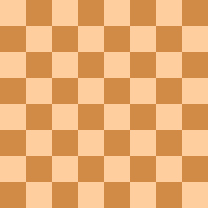The French Defence is a chess opening characterised by the moves:
The Ruy Lopez, also called the Spanish Opening or Spanish Game, is a chess opening characterised by the moves:
The Giuoco Piano is a chess opening beginning with the moves:
Alekhine's Defence is a chess opening that begins with the moves:
In chess, the Greek gift sacrifice, also known as the classical bishop sacrifice, is a typical sacrifice of a bishop by White playing Bxh7+ or Black playing Bxh2+ at some point after the opponent has castled kingside, with the goal generally being to attack and checkmate the opponent's king, or to regain material. It is important to consider the opponent's defenses.
In chess, a passed pawn is a pawn with no opposing pawns to prevent it from advancing to the eighth rank; i.e. there are no opposing pawns in front of it on either the same file or adjacent files. A passed pawn is sometimes colloquially called a passer. Passed pawns are advantageous because only the opponent's pieces can stop them from promoting.
The Ponziani Opening is a chess opening that begins with the moves:
The Torre Attack is a chess opening characterized by the moves:
The Nimzowitsch-Larsen Attack is a chess opening typically starting with the move: 1.b3 but sometimes introduced by the move order 1.Nf3 and then 2.b3. The flank opening move 1.b3 prepares to fianchetto the queen's bishop where it will help control the central squares in hypermodern fashion and put pressure on Black's kingside.
The Stonewall Attack is a chess opening characterized by White playing pawns to d4 and e3, bishop to d3, knight to d2, and then completing the Stonewall structure by playing pawns to c3 and f4. This set-up is usually achieved by a 1.d4 move order but transposition is also possible via Bird's Opening, 1.f4. The Stonewall Attack is a system; White heads for a very specific pawn formation, rather than trying to memorize long lines of different variations. Black can set up in various ways in response, but MCO-15 gives the following as a main line: 1.d4 d5 2.e3 Nf6 3.Bd3 c5 4.c3 Nc6 5.f4.
In chess, the Scheveningen Variation of the Sicilian Defence is an opening that is a line of the Open Sicilian characterised by Black setting up a "small centre" with pawns on d6 and e6. There are numerous move orders that reach the Scheveningen; a common one is:
Johann Hermann Bauer was an Austrian chess master.
Alekhine's gun is a formation in chess named after the former world chess champion Alexander Alekhine. It is a specific kind of battery. This formation was named after a game he played against Aron Nimzowitsch in Sanremo 1930, ending with Alekhine's decisive victory.

Deep Blue versus Garry Kasparov was a pair of six-game chess matches between then-world chess champion Garry Kasparov and an IBM supercomputer called Deep Blue. Kasparov won the first match, held in Philadelphia in 1996, by 4–2. Deep Blue won a 1997 rematch held in New York City by 3½–2½. The second match was the first defeat of a reigning world chess champion by a computer under tournament conditions, and was the subject of a documentary film, Game Over: Kasparov and the Machine.

The World Chess Championship 1886 was the first official World Chess Championship match contested by Wilhelm Steinitz and Johannes Zukertort. The match took place in the United States from 11 January to 29 March, the first five games being played in New York City, the next four being played in St. Louis and the final eleven in New Orleans. The winner was the first player to achieve ten wins. Wilhelm Steinitz won the match 10–5, winning his tenth game in the twentieth game of the match. There were five draws.

The second World Chess Championship was held in Havana, Cuba in 1889. Defending champion Wilhelm Steinitz beat challenger Mikhail Chigorin with a score of 10½ -6½.

A World Chess Championship was played between challenger Max Euwe and title-holder Alexander Alekhine in various cities and towns in the Netherlands from 3 October to 16 December 1935. Euwe was the winner by overcoming a three-point deficit as late as the ninth game.
The Semi-Italian Opening is one of Black's responses to the Italian Game. It begins with the moves:
The 1992 Fischer–Spassky match was a chess match between former world chess champions Bobby Fischer and Boris Spassky. It was billed as a World Chess Championship, though it was an unofficial rematch of their 1972 World Championship match. Fischer won 10–5, with 15 draws. Although there was substantial media coverage, and some drama, public interest in this rematch was not nearly as great as with the 1972 World Championship match in Reykjavík, Iceland.
The 14th season of the Top Chess Engine Championship took place between 17 November 2018 and 24 February 2019. Stockfish was the defending champion, having defeated Komodo in the previous season's superfinal.




